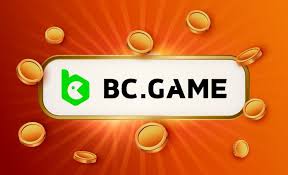
The Exciting World of Coin Flip: A Game of Chance and Strategy
Coin flip games have captivated audiences for centuries, often serving as a quick means of decision-making or a source of thrilling entertainment. While the fundamental concept of a coin flip is simple—flipping a coin to determine heads or tails—the implications and outcomes can be intricately fascinating. In this article, we will delve into the various facets of the Coin Flip, exploring its rules, strategies, and cultural significance.
Understanding the Basics of Coin Flip
At its core, a coin flip is a binary event. Players can choose between two sides of a coin: heads or tails. The outcome is determined by an unbiased flip, making it a random event with no influence from external factors. The simplicity of the game makes it accessible to people of all ages. It’s often used in everyday situations—such as deciding which team goes first in a game or resolving trivial disputes—which speaks to its embeddedness in our culture.
The Mechanics of Coin Flip Games
Coin flip games can be played casually among friends or in more structured environments like casinos. Here’s how a traditional coin flip game works:
- Setup: Players agree on the rules and stakes of the game. This can involve betting money, points, or other items of value.
- Choosing Sides: Each player selects a side of the coin. This can be done openly or through a secret ballot, depending on the agreements.
- The Flip: One player (often referred to as the “flipper”) takes the coin, gives it a toss, and lets it land on a surface.
- Determining the Outcome: The side of the coin facing up when it lands determines the winner. Winning can lead to various outcomes, from taking the bet to deciding the next step in a game.
Strategies for Winning Coin Flip Games
While a coin flip is primarily a game of chance, certain strategies can help players maximize their enjoyment and effectiveness in more structured versions of the game. Since the outcome isn’t influenced by skill, strategies often revolve around psychological aspects and betting tactics:
- Understanding Probability: Since each side of the coin has a 50% chance of coming up, players can use this information to gauge their bets and make decisions accordingly.
- Reading Opponents: In a competitive environment, understanding how other players make their choices can provide an edge. Some players might have a preferred side they choose more often.
- Emotional Control: Staying calm and composed, especially after a loss, can prevent impulsive decisions in subsequent rounds.
The Role of Coin Flip in Popular Culture
The coin flip has transcended its ordinary use to become a significant element in various cultural contexts. It appears in movies, TV shows, and literature as a metaphor for chance, decision-making, and fate. One of the most famous uses is in the movie «No Country for Old Men,» where a coin flip serves as a pivotal moment that encapsulates the themes of randomness and morality.

Coin Flip and Gambling
In gambling, the coin flip can take on various forms. it is often used in games like craps or as a tiebreaker in betting scenarios. Casinos may employ coin tosses for low-stakes games, while high-stakes players might use similar methods for gambling decisions, demonstrating how this simple act is woven into the fabric of gambling culture.
Coin Flip in Sports
The sports world frequently utilizes coin flips for decision-making. In American football, a coin flip determines which team starts with possession of the ball. This moment is crucial, setting the tone for the game ahead. Similarly, in many other sports, officials may use a coin toss to determine specific game conditions or rule applications, reinforcing the coin flip’s importance in competitive settings.
Exploring Digital Coin Flip Games
With technology advancing, digital versions of the coin flip have become immensely popular. Online platforms offer random coin flip generators, allowing users to access this classic game at their convenience. Some gaming apps even incorporate coin flips into their mechanics, enhancing gameplay and adding a layer of strategy to traditional coin tossing.
Conclusion: The Timeless Appeal of Coin Flips
The coin flip is more than just a simple game of chance; it embodies elements of strategy, psychology, and cultural significance. Whether used for casual decision-making or high-stakes gambling, the appeal of the coin flip endures, making it a timeless aspect of human interaction. As we’ve explored, this simple act is rich with meaning and application across various spheres of life, from sports to the realms of digital gaming. Understanding its nuances can not only enhance one’s appreciation for the game but also provide insights into the complex interplay of chance and choice in our everyday lives.
Further Reading and Resources
If you want to delve deeper into the fascinating world of coin flips and their applications, consider exploring the following resources:
- The Mathematics of Coin Tossing
- Strategies for Games of Chance
- Cultural Significance of Randomness in Games



